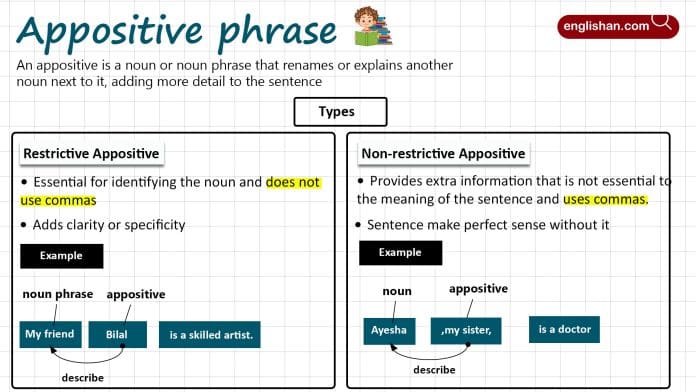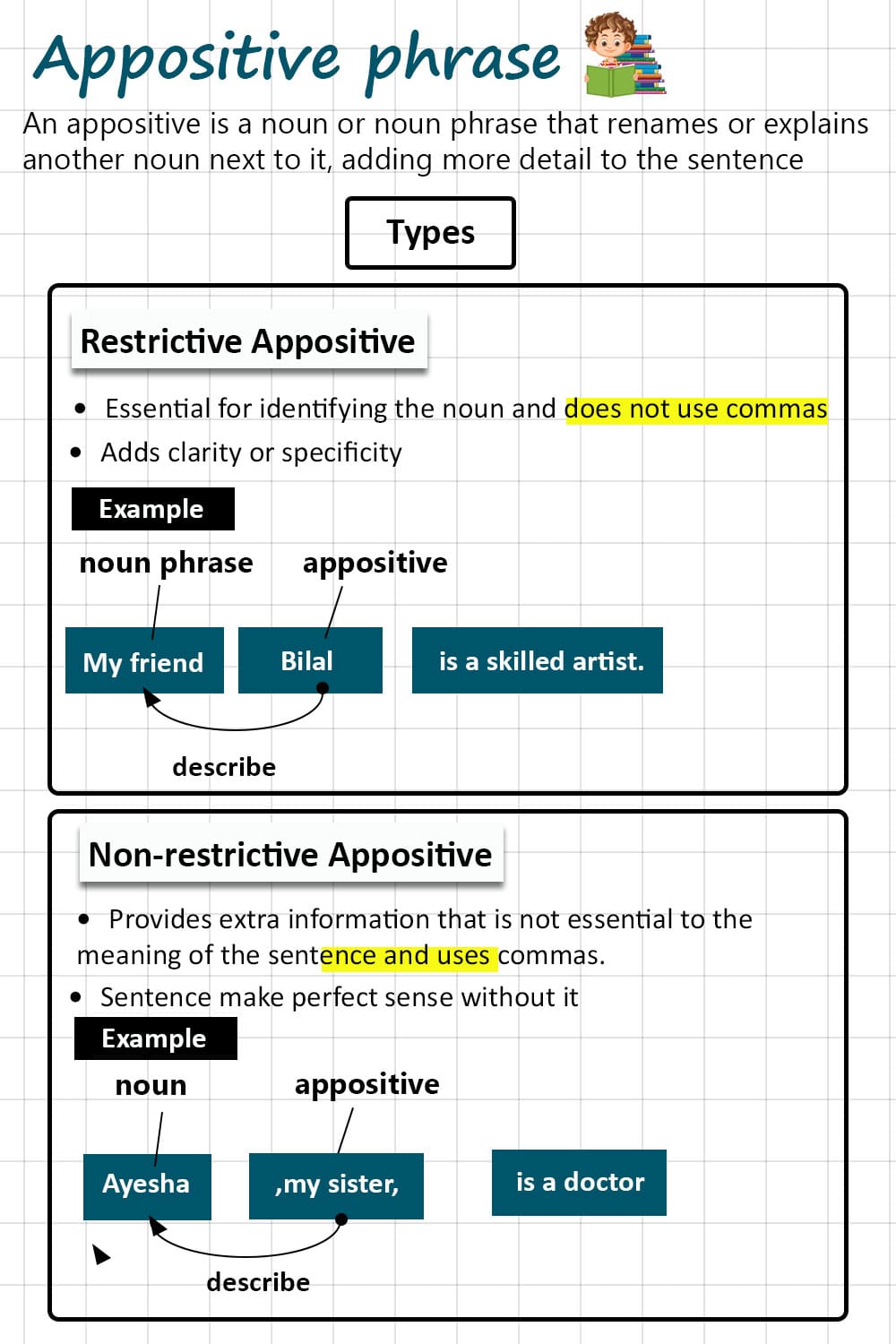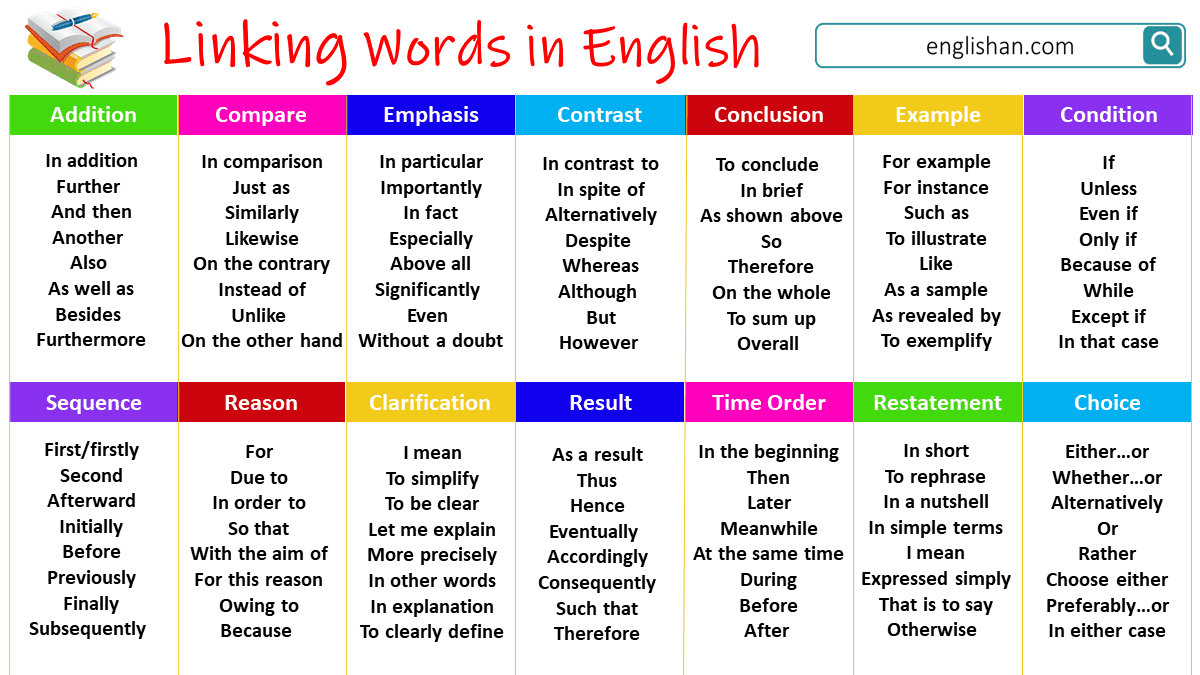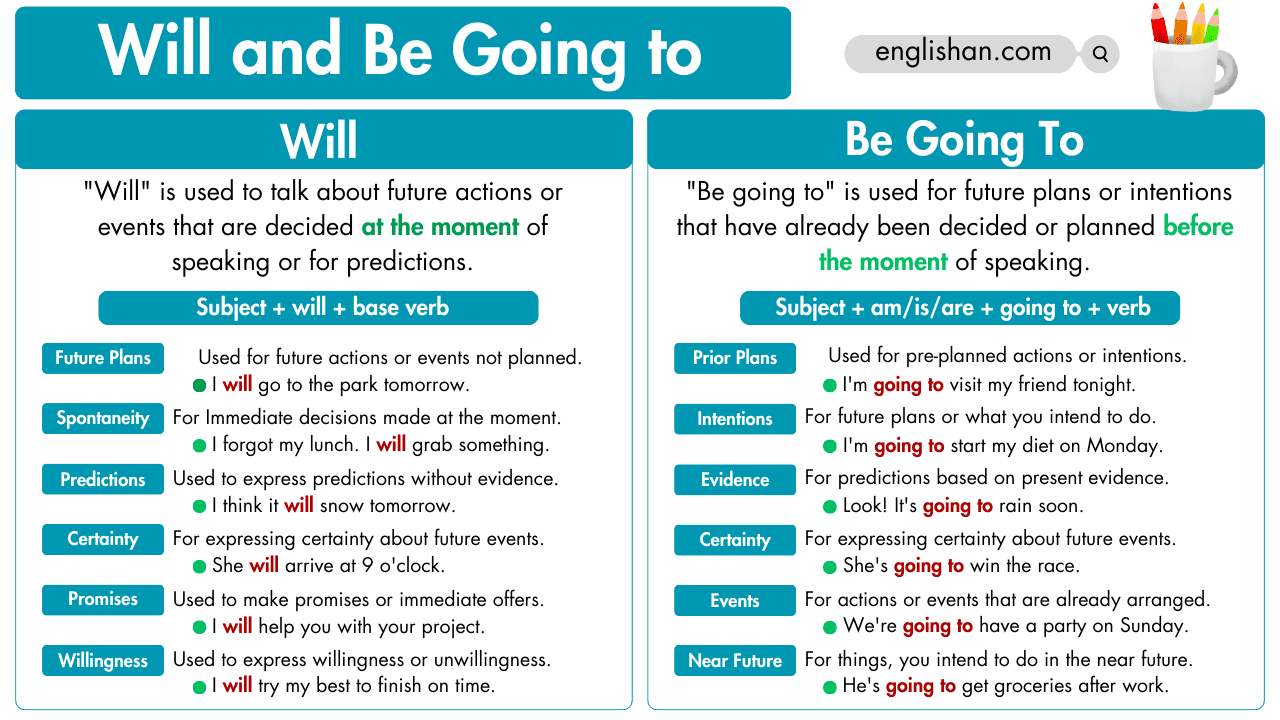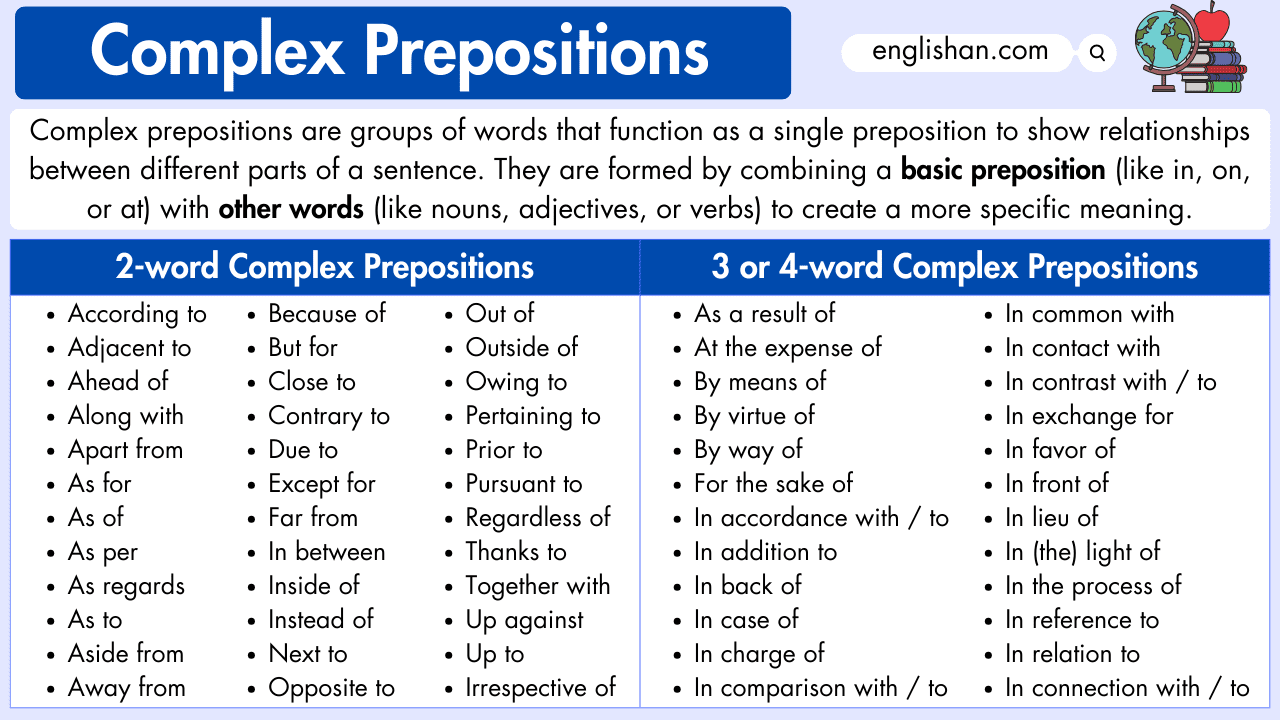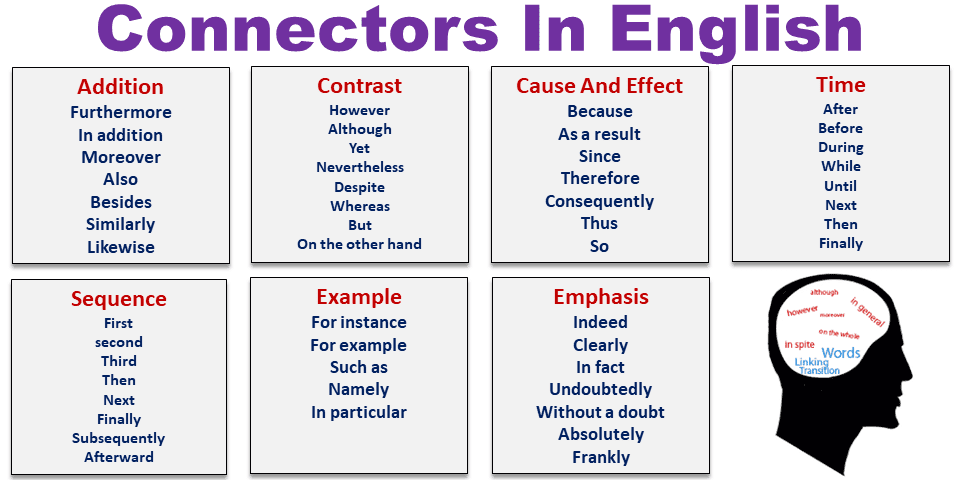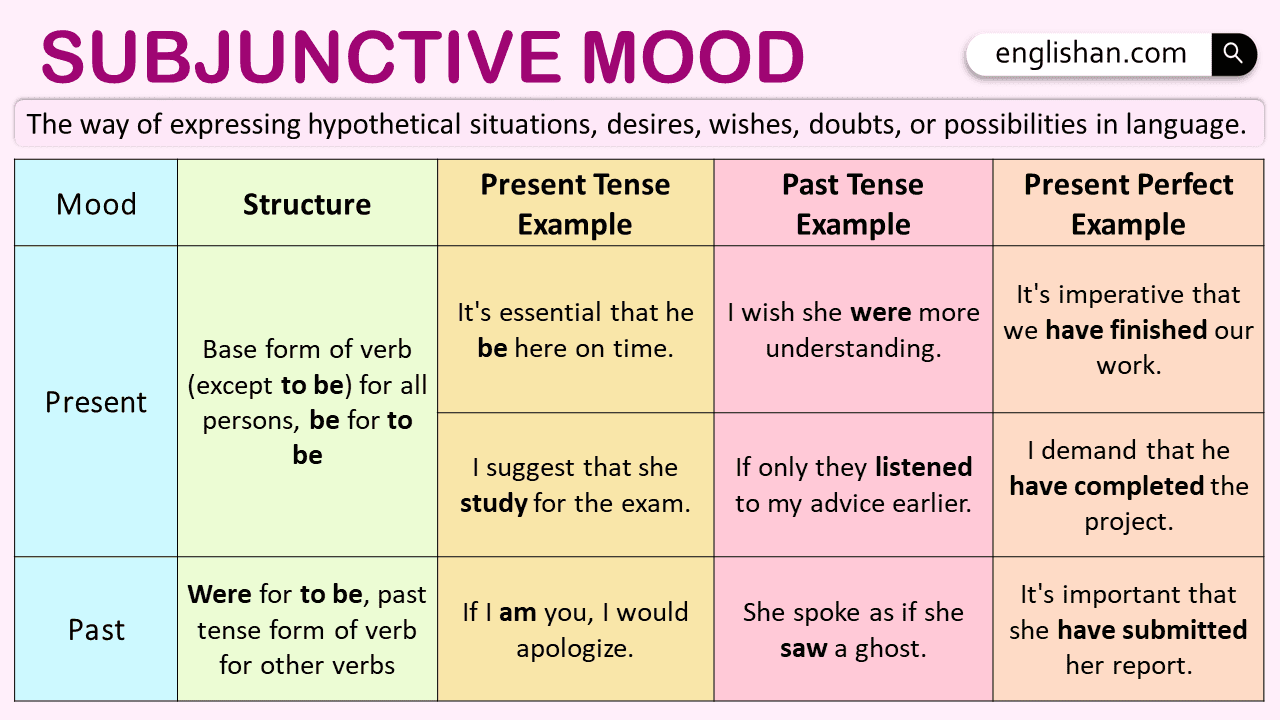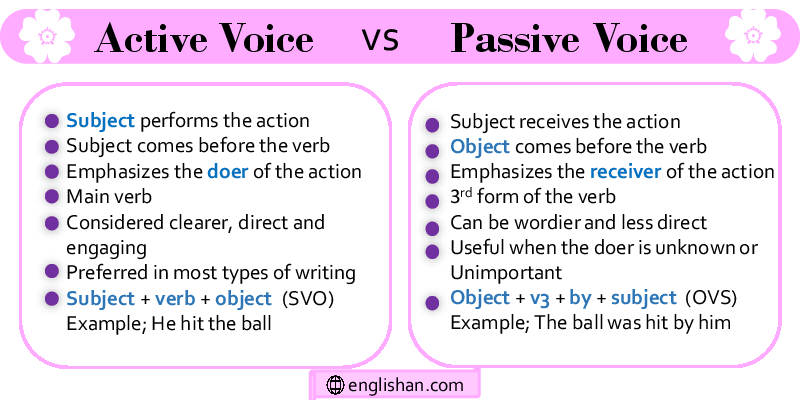Contents
In English grammar, an appositive phrase plays a significant role in adding clarity and detail to sentences. Understanding the use of appositive phrases can help learners write more fluently and accurately, which is crucial for mastering the language. In this blog post, we will explore what an appositive phrase is, its types, and its importance in English grammar.
What is an Appositive?
An appositive is a noun or noun phrase that renames or explains another noun right beside it. In simple terms, it provides more information or detail about a noun in a sentence. Appositive phrases help avoid repetition, adding richness to the sentence without being redundant.
Example:
- Amina, a dedicated student, always finishes her homework on time.
In this example, the phrase a dedicated student is an appositive that renames or provides more information about Amina. The sentence could be written without the appositive, but the additional detail enhances our understanding of Amina’s character.
Types of Appositives Phrases
Appositives come in two main types: restrictive and non-restrictive. These two types differ based on whether the additional information is essential to the meaning of the sentence or simply provides extra detail.
Restrictive Appositive Phrase (Essential)
A restrictive appositive is necessary to identify the noun it renames. If you remove it from the sentence, the meaning becomes unclear or changes. Restrictive appositives are not set off by commas.
Example:
- My friend Bilal is an excellent cricket player.
Here, the name Bilal is essential to the meaning of the sentence because the speaker has many friends, and the appositive identifies the specific friend being talked about. Removing it would make the sentence unclear.
Non-restrictive Appositive Phrase (Non-Essential)
A non-restrictive appositive adds extra information about a noun that is already clear. You can remove the appositive, and the sentence will still make sense. Non-restrictive appositives are set off by commas.
Example:
- Zainab, my cousin, loves reading books.
In this sentence, my cousin is additional information. Even if you remove it, the sentence Zainab loves reading books still makes sense.
Why Appositives Are Important
Appositives are an essential tool in writing because they allow for conciseness and variety. By using appositive phrases, you can avoid repetitive or awkward sentences. They also add depth to your writing by providing extra details without needing long, drawn-out explanations.
Example without an appositive:
- Ahmed is a software engineer. Ahmed works at a multinational company.
This sentence feels repetitive. By using an appositive, you can combine these two sentences:
Example with an appositive:
- Ahmed, a software engineer, works at a multinational company.
Using appositives helps streamline sentences while keeping the essential details intact, making the writing more engaging and efficient.
Common Mistakes with Appositives Phrase
Though appositives seem straightforward, there are a few common mistakes that learners often make. Let’s look at some of them:
1. Misplacing Commas
It’s important to remember that non-restrictive appositives need commas, while restrictive appositives do not.
✅ Muhammad, my brother, is visiting us this weekend.
❌ Muhammad my brother is visiting us this weekend.
In this sentence, the commas are necessary because my brother is non-essential information.
2. Confusing Restrictive and Non-restrictive Appositives
Learners sometimes confuse when to use commas with appositives. For essential appositives, no commas are needed, as they provide necessary information.
✅ My friend Sara is going to the party.
❌ My friend, Sara, is going to the party.
In this example, removing Sara from the sentence would make it unclear which friend is being referred to, so commas are not needed.
3. Overuse of Appositives
While appositives are helpful, overusing them can make sentences feel cluttered or difficult to read. It’s best to use them sparingly and only when they genuinely enhance the sentence.
Summary
Appositive phrases are a powerful tool in English grammar that allows writers to add clarity and detail to their sentences. By understanding the difference between restrictive and non-restrictive appositives, learners can use them more effectively. Appositives make sentences more concise, engaging, and easier to understand when used correctly. However, it’s important to avoid common mistakes such as incorrect comma placement or overusing appositive phrases.
Read More
